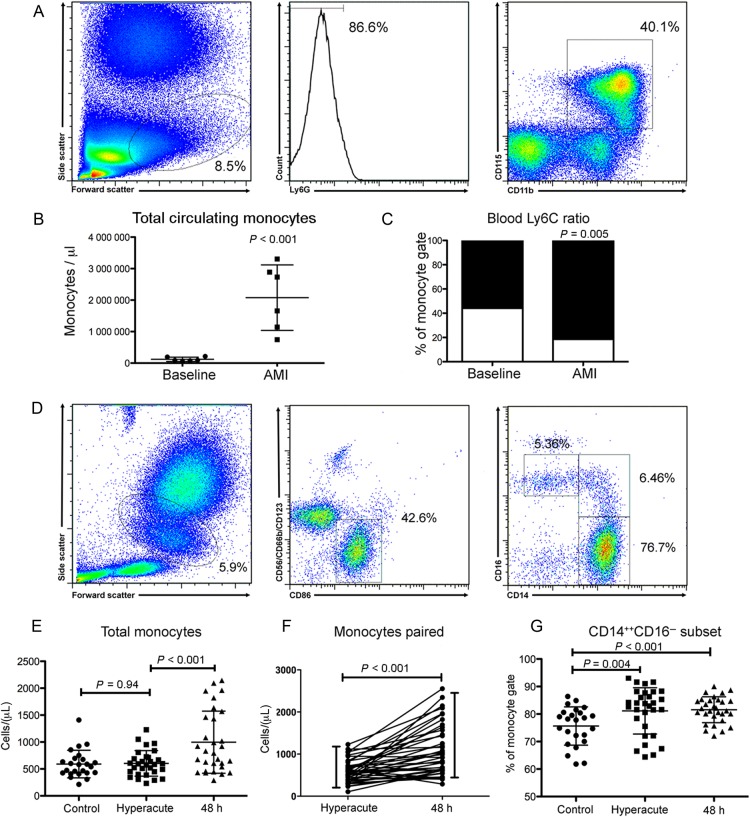Figure 1.
Acute myocardial infarction results in an increase in total peripheral circulating monocytes of an inflammatory phenotype in both mice and humans. (A) Fluorescence-activate cell sorting (FACS) gating strategy to identify monocytes in peripheral blood (mice, n = 6/group). (B) Acute myocardial infarction results in a significant 4-fold increase in total monocytes (P < 0.001), which were predominately of an inflammatory Ly6Chi phenotype (C). (D) Human monocyte (and monocyte subset) gating strategy (n = 24 control group, n = 30 acute myocardial infarction group). (E) Acute myocardial infarction results in a significant 2-fold increase in total monocytes (P < 0.001) at 48 h following injury but not at the hyperacute (at presentation) timepoint (F). (G) Monocytes at both the hyperacute and 48 h time points exhibited an inflammatory CD14++CD16− phenotype. Data are represented by mean ± standard deviation.

